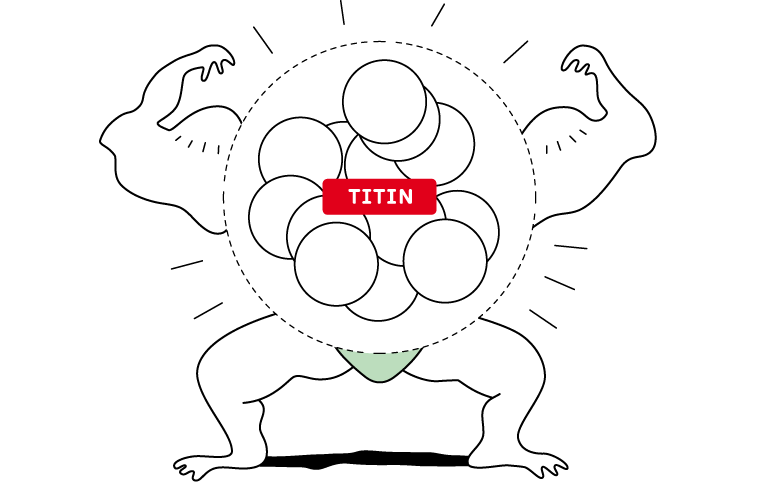List of chromosomes » Chromosome 2
The colossus of proteins
Proteins of all lengths
The average protein is 300 amino acids long…and titin has 34’350 amino acids! Talk about comparing the weight of an elephant with a human!

Long live our muscles!
Every time we jump or run, titin works hard in our muscle cells. Titin is very long and flexible, and helps to preserve the architecture of muscle cells, which are severely tested by repeated contracting and stretching.

A computer crash!
The gigantic proportions of titin were problematic for bioinformaticians. Why? When scientists decided to establish its ‘virtual portrait’, the existing computer programs couldn’t deal with the protein’s size simply because they had been conceived to analyse “standard-sized” proteins. And when titin was introduced, the computers just crashed!

The virtual portrait of a protein
What is the point of establishing the virtual portrait of a protein? Well, it gives scientists an idea of a protein’s role in an organism, for instance. As is the case for any virtual portrait, a protein’s is hypothetical and has to be checked by a researcher in the laboratory.

3D structure of a titin fragment. This particular fragment is made up of one region which is repeated six times and, represents one fiftieth of the total lenght of the protein.
An example
A protein’s virtual portrait gives an estimate of the protein’s weight and lifespan in a cell. It can also predict the protein’s shape, possible interactions it may have with other proteins, or even identify specific regions, such as domains which are repeated. These are all important clues that help scientists orientate their research. In the case of titin, the computer programs determined a region which was repeated 6 x 22 times! This particular region has a precise function: it binds to other proteins that are essential for muscle contraction.

External links
Prolune – snapshot: Titin
Bioinformatics expert: The amino acid sequence of titin
Bioinformatics expert: The chimpanzee has kept two ancestral copies of chromosome 2
Corresponding protein in UniProtKB/Swiss-Prot
Protein Spotlight – comics: What’s a protein?

